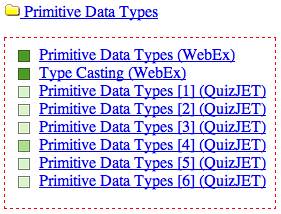PERSEUS adaptation for Ensemble project
Contents
About Ensemble
Ensemble see http://www.computingportal.org for details) is a new NSF NSDL Pathways project working to establish a national, distributed digital library for computing education. Our project is building a distributed portal providing access to a broad range of existing educational resources for computing while preserving the collections and their associated curation processes. We want to encourage contribution, use, reuse, review and evaluation of educational materials at multiple levels of granularity and we seek to support the full range of computing education communities including computer science, computer engineering, software engineering, information science, information systems and information technology as well as other areas often called “computing + X” or “X informatics.”
Overview
The main goal of enhancing Ensemble portal (http://www.computingportal.org) with adaptation is to provide an extra value to the rich collection of resources that the portal is currently hosting. Out of a large set of possible adaptation techniques we selected the one that captures the social traits of portal users. Namely, visualizes users' browsing behaviors.
In Figure 1 there is a screenshot of an existing portal page with adaptive navigation cues added. Here green bullets of various shades denote the intensity of the users' click traffic: the darker the shade - the more clicks visits the page has. Here users are not distinguished from each other. Instead, a page-viewing behavior of a community of all portal users is visualized. Figure 2 is a more elaborate example where each individual user is contrasted to the rest of the community. The bullet background represents the whole user community, an the foreground person icon denotes an individual user.
For the adaptation to work, Ensemble portal has to "cooperate" with the adaptation providers. There are two components that are responsible for adaptation.
- User modeling server CUMULATE, that collects user page-viewing behavior. Portal should be able to send page-view events containing the viewed page URL and potentially additional information about the user.
- Adaptation server PERSEUS, that, upon request, renders a visualization of aggregated user viewing-behaviors collected by the user modeling server. Portal should be able to query PERSEUS to obtain navigation icons (just like those in figure 1 and 2) for links on a particular portal page (all or a subset). It should also to be able to parse the PERSEUS's response and paste these icons on the rendered page.
Implementation
Reporting users's page-views
This par is absolutely necessary. Adaptation requires a special kind of user-data processing and cannot be easily implemented as a plugin for Drupal (the basis for Ensemble portal). Portal has to send an HTTP GET request to the user modeling server's listening url that contains:
- URL of the page being viewed
- Some form of user identity (e.g. client IP address or portal login). This information is optional but desirable to be able to support a more advanced adaptation such as the one in Figure 2.
Requesting adaptation (easy)

Adaptation can be provided in a fairly painless manner by inserting embed HTML tags, just like those YouTube offers. PERSEUS's embedlet is, in some way, an iframe and PERSEUS assumes full responsibility to render links' presentation (see Figure 3 for an example of embedlet's rendering in a browser).
The use of these embedlets requires for the list of links adaptation is provided for to be cached in advance, so that the enumeration of links to be adaptively presented can be done in a concise manner and the invoked embedlet URL does not exceed 255 characters.
Embedlet could work in both group-based mode providing adaptation similar to the one shown in Figure 1, or group-and-individual mode, similar to the one shown in Figure 2.
Requesting adaptation (hard)
Coming soon...
Progress Blog
- 13:49, 9 July 2010 (EDT) : Drupal Rules module identified as a way to redirect user clicks to CUMULATE UMS
- 18:27, 15 July 2010 (EDT) : CUMULATE configured for accepting test input of Ensemble portal user navigation reports via this protocol. Preliminary by-hand testing is successful.
- 18:51, 15 July 2010 (EDT) : Preliminary test of Ensemble portal user navigation reports to CUMULATE successful
Ensemble is a new NSF NSDL Pathways project working to establish a national, distributed digital library for computing education. Our project is building a distributed portal providing access to a broad range of existing educational resources for computing while preserving the collections and their associated curation processes. We want to encourage contribution, use, reuse, review and evaluation of educational materials at multiple levels of granularity and we seek to support the full range of computing education communities including computer science, computer engineering, software engineering, information science, information systems and information technology as well as other areas often called “computing + X” or “X informatics.”


